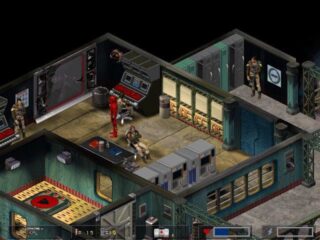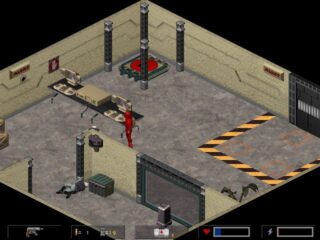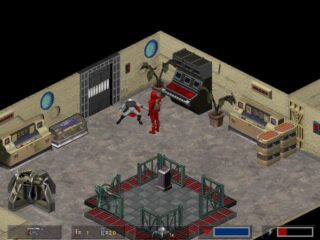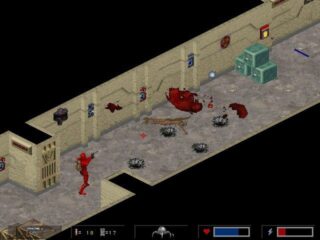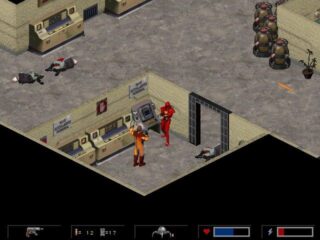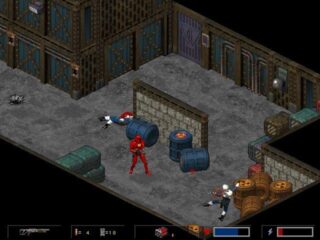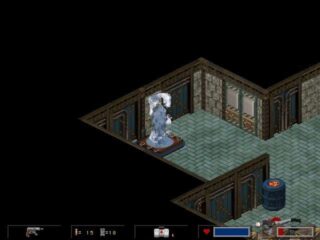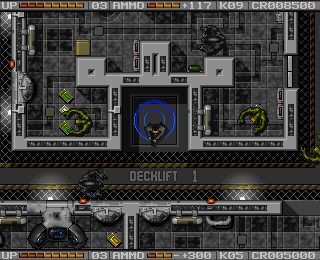Crusader: No Remorse is an isometric action-shooter developed by Origin Systems and released in 1995 for MS-DOS. It was later ported to PlayStation and Sega Saturn, bringing its intense combat and cinematic presentation to console audiences.
Created by industry veterans Tony Zurovec, who served as lead programmer on Ultima VIII: Pagan and programmer for Ultima VII: Serpent Isle, and Mark Vittek, designer for both Ultima VII: The Black Gate and Ultima VIII: Pagan, the game represents a bold departure from Origin's traditional role-playing heritage. Built using a modified version of the Ultima VIII engine, Crusader: No Remorse transforms the technology initially designed for fantasy adventures into a futuristic action experience that showcases the versatility of Origin's development tools.
Players control the Silencer, a former elite soldier of the totalitarian World Economic Consortium who defects to join the Resistance after witnessing his squad's betrayal. The isometric perspective provides perfect tactical awareness as players navigate through industrial complexes, corporate facilities, and underground hideouts. Combat emphasizes destructive firepower with an impressive arsenal including plasma rifles, rocket launchers, and exotic energy weapons that can obliterate both enemies and environments with spectacular results.
What elevates Crusader: No Remorse beyond simple run-and-gun gameplay is its masterful integration of action and puzzle elements. Each level presents environmental challenges that require careful observation and strategic thinking. Players must navigate laser grids, disable security systems, manipulate conveyor belts, and avoid deadly traps while maintaining pressure on corporate security forces. The puzzle design never feels intrusive or artificial - every obstacle serves the narrative purpose of infiltrating heavily fortified facilities.
The game's environmental destruction system remains impressive even by modern standards. Walls crumble under heavy weapons fire, explosive barrels chain-react in satisfying cascades of destruction, and entire rooms can be reshaped through strategic use of firepower. This destructibility adds tactical depth as players can create new pathways, eliminate cover, or trigger environmental hazards to dispatch groups of enemies.
Character animation deserves particular praise, with the Silencer's fluid movements and combat animations conveying weight and impact. Enemy soldiers react convincingly to different weapon types, and the death animations, while violent, serve the game's dark cyberpunk atmosphere. The pre-rendered cutscenes, featuring live actors against digital backgrounds, create a cinematic presentation that was cutting-edge for 1995.
Audio design perfectly complements the action with industrial soundscapes, satisfying weapon effects, and a driving electronic soundtrack that maintains tension throughout missions. Voice acting in cutscenes delivers the necessary gravitas for the dystopian storyline, though some performances feel appropriately over-the-top for the B-movie science fiction tone.
Compared to other action games of 1995 like Descent or Dark Forces, Crusader: No Remorse offers a unique blend of tactical combat and environmental puzzle-solving that few titles matched. While games like Syndicate provided similar isometric combat, none combined the destructive spectacle with such thoughtful level design.
The perfect balance between intense firefights and cerebral challenges made Crusader: No Remorse one of the standout games of 1995. Tony Zurovec and Mark Vitiek's experience with complex RPG systems translated beautifully into action game design, creating an experience that rewards both quick reflexes and careful planning. The game's success led to the equally impressive sequel Crusader: No Regret, cementing the series as one of Origin's finest achievements outside the Ultima franchise.


